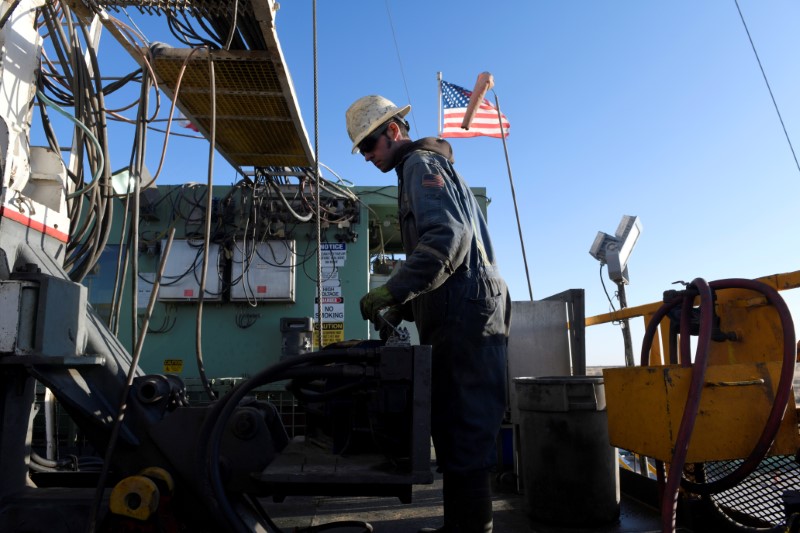By Olesya Astakhova and Dmitry Zhdannikov
LONDON (Reuters) - When OPEC, Russia and their allies agreed in April to slash oil production, little did they expect that their initiative to prop up collapsing prices would be helped by a swift drop in U.S. output.
Now that crude (LCOc1) has rallied on the back of those cuts from below $20 a barrel to $40 or more, the group known as OPEC+ faces a fresh challenge: stopping U.S. shale production delivering another surprise by recovering equally quickly.
"The plan is to stick to prices of $40-$50 per barrel because as soon as they rise any further to say $70 per barrel it encourages too much oil production, including U.S. shale," said a Russian source familiar with OPEC+ talks on the issue.
OPEC+ sources told Reuters on Wednesday that Russia and Saudi Arabia had reached a compromise to extend into July the group's existing output cuts of 9.7 million barrels per day (bpd), the equivalent of 10% of global output.
Those deep cuts had been due to be implemented in just May and June, before curbs were to be slowly eased.
Concerns about a resurgence of U.S. shale, which is already showing signs of revival, was one reason Moscow and Russia only backed prolonging cuts into July rather than agreeing a longer extension, two sources briefed on OPEC+ talks said.
OPEC and its partners have in the past set out policy for several months at least, but JPMorgan (NYSE:JPM)'s Christyan Malek said the month-by-month approach was a "lesser of the evils" as global demand picks up after crashing due to the coronavirus crisis.
"Saudi and Russia are in damage control mode. It is not only about measuring demand. It is also about tracking U.S. shale on a month-by-month basis in order not to allow shale to rebound back quickly," he said.
In recent years, even as OPEC+ cut output to support prices, U.S. production of crude and other liquids surged, soaring to 20 million bpd. But, with breakeven for shale oil producers around $50-$70 a barrel, this year's price collapse sent U.S. output down by as much as 2 million bpd in April by some estimates.
Global oil demand, which tumbled by as much as a third in April, has been recovering slowly with the easing lockdown measures. Demand is expected to exceed supply in June.
But global inventories are still bulging, after 1 billion barrels of oil was pumped into storage when producers struggled to find buyers.
"The market is very fluid and given the uncertainty around the trajectory of demand recovery versus the risks of a second wave of the virus, OPEC has to be nimble," said Amrita Sen, co-founder of Energy Aspects.
"By doing this month-by-month, they keep everyone on their toes, making it difficult for others to invest," she said.
Bob McNally, founder of Rapidan Energy Group, said Moscow and Riyadh were worried enough about the outlook to want to extend the production cuts.

"But no question that crude's unexpected rally along with faster-than-expected North American shut ins has reduced the level of concern," he said.